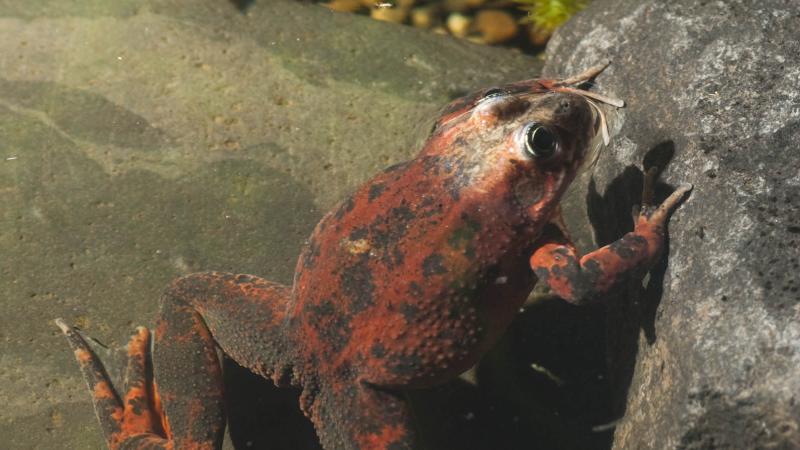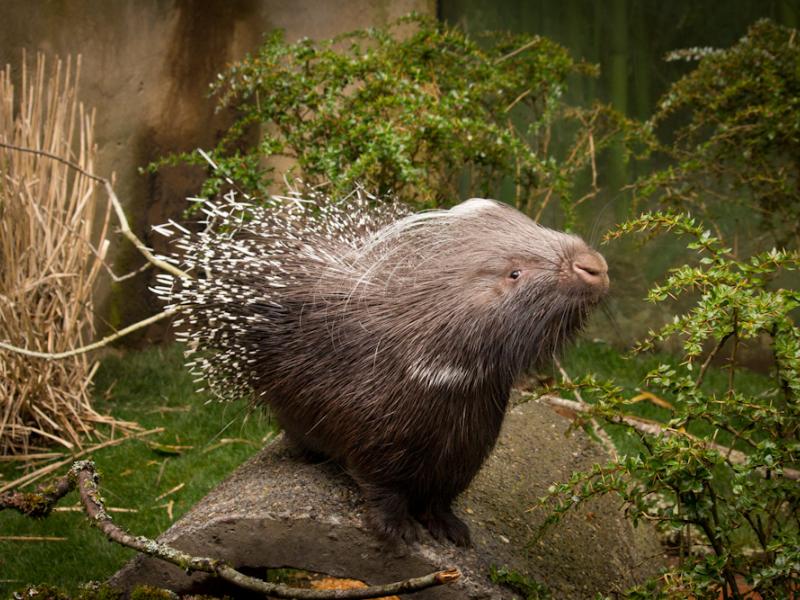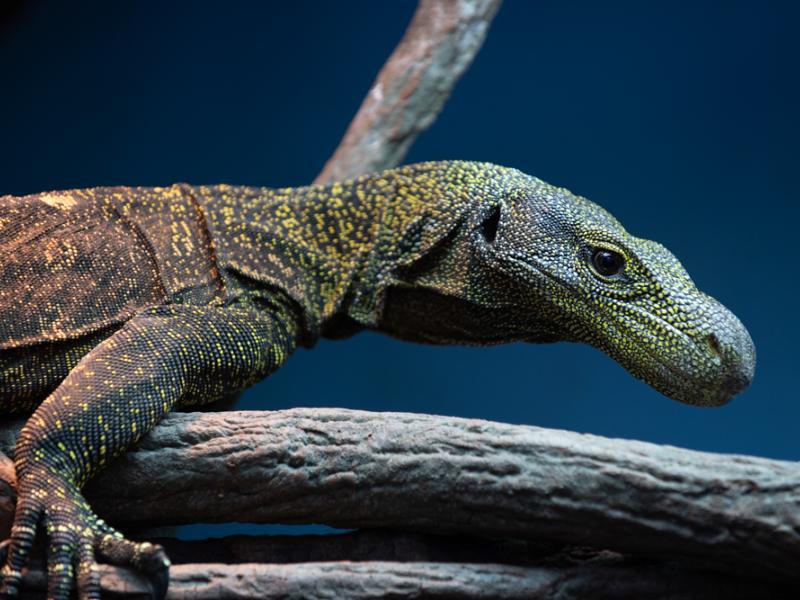
Once common in the Pacific Northwest, the Oregon spotted frog has disappeared from 95 percent of its range, largely due to habitat loss and the negative impact of invasive species such as the American bullfrog.
The Oregon spotted frog (Rana pretiosa) is both the most aquatic and most imperiled native frog in the Northwest, and requires shallow water and abundant aquatic plants for basking and cover. Historically, it ranged from British Columbia to northern California. Considered endangered in Canada and Washington and threatened in Oregon, this amphibian is a candidate for listing under the federal Endangered Species Act.
Threats
-
Habitat loss
wetlands are lost to draining, damming or filling and livestock overgrazing of streamside vegetation
-
Invasive predators
such as the Eastern bullfrog and bass, which prey on tadpoles and frogs
-
The chytrid fungus
native to Africa, it threatens amphibian populations.
-
Introduced plants
like reed canarygrass, which displace native vegetation.
Oregon spotted frog recovery
The Oregon Zoo and its conservation partners are working to repopulate the historic range of the Oregon spotted frog.
With the notable exception of Conboy Lake National Wildlife Refuge, Oregon spotted frogs have disappeared from almost every wetland containing bullfrogs.
Since 1998, zoo staff and volunteers have studied and worked with Conboy Lake frogs in order to monitor population trends and latterly to establish new populations.
- Early spring – Staff and volunteers monitor frog populations in the wild by conducting frog egg mass surveys. In March they collect egg masses at wild sites and transport them to the zoo. Eggs hatch in about three weeks.
- Spring and summer – Staff and volunteers nurture tadpoles at the zoo and other sites. Tadpoles eat algae, detritus and carrion. During summer, they metamorphose into frogs.
- Late summer and early fall – Frogs are released into protected, intact wetlands where predation by non-native species poses less of a risk to population survival. Scientists continue to monitor release sites for egg masses and frog populations.
Success and ongoing work
Research at the Oregon Zoo is providing a better understanding of how wetlands can be managed so that spotted frogs and bullfrogs can coexist. In 2012, the Oregon Zoo, Woodland Park Zoo and Northwest Trek were awarded with "top honors" in the AZA's North American Conservation Awards category for the collaborative Oregon spotted frog reintroduction project. The award recognizes "exceptional efforts toward regional habitat preservation, species restoration and support of biodiversity." The zoo continues to conduct egg mass surveys at spotted frog sites and research the roles that habitat and predation may play in spotted frog survival in order to make management recommendations to mitigate for their impact.
The zoo works with these partners on frog recovery efforts: Joint Base Lewis-McChord, Mountain View Conservation & Breeding Centre, Northwest Trek Wildlife Park, NW Zoo & Aquarium Alliance, Point Defiance Zoo & Aquarium, Port Blakely Tree Farms, The Nature Conservancy, U.S. Geological Survey, U.S. Fish & Wildlife Service, Washington Department of Fish & Wildlife, Washington State Department of Natural Resources, Washington State Department of Transportation and Woodland Park Zoo.




